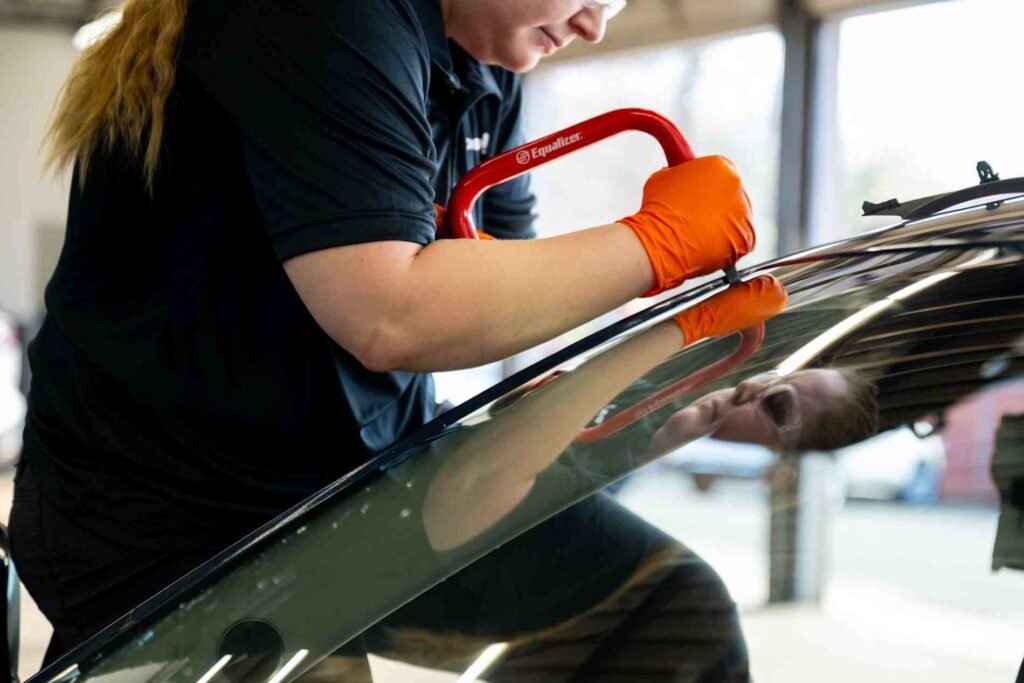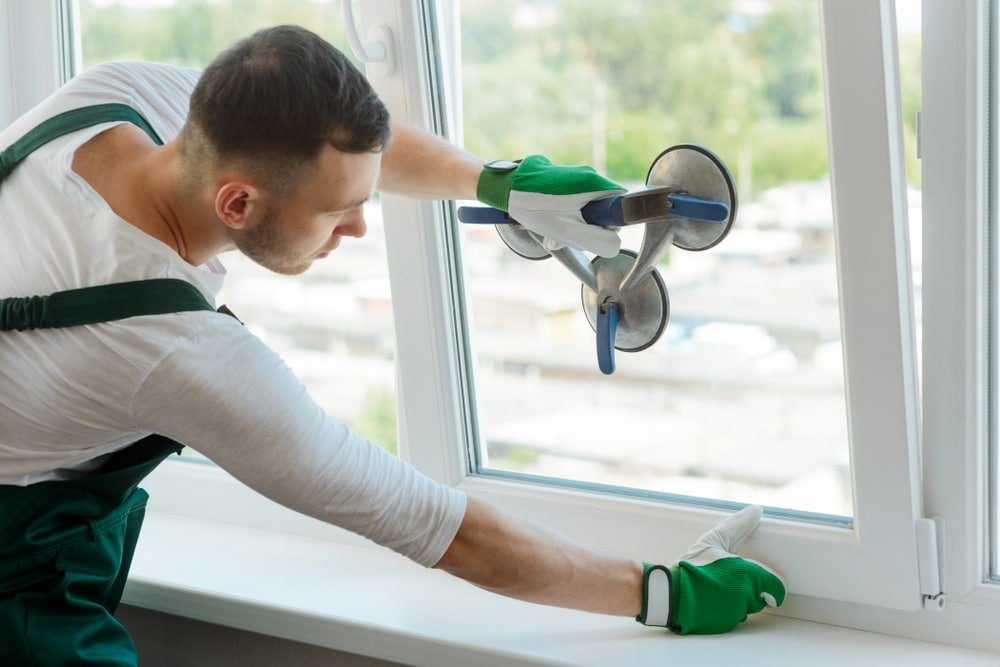Glass plays a crucial role in homes, vehicles, and businesses, offering functionality and aesthetic appeal. When it becomes damaged, the decision to repair or replace the glass depends on factors like the severity of the damage, cost considerations, and long-term benefits. In this blog, Solex Glass and Mirror will explore the key differences between glass repair and replacement, covering essential aspects such as costs, benefits, and when each option is more practical. By the end of this guide, you’ll have a clear understanding of how to address glass damage effectively, ensuring safety and value for your investment.
What is Glass Repair?
Glass repair refers to the process of fixing minor damages like chips or cracks in the glass without replacing the entire pane. Specialized techniques, such as resin injection, are commonly used to restore the glass’s integrity and appearance. This option is cost-effective and environmentally friendly, as it minimizes waste. Repairing glass is ideal for small damages, such as a windshield chip or a minor scratch on a window. However, repair isn’t suitable for extensive damage or compromised structural integrity. Understanding what glass repair entails helps determine when it’s a viable solution to restore the functionality and look of your glass.
What is Glass Replacement?
Glass replacement involves removing the damaged glass entirely and installing a new pane. This method is typically necessary when the damage is extensive, such as large cracks, shattered glass, or significant structural issues. Replacement ensures maximum durability, safety, and aesthetic quality, as new glass meets current standards and specifications. While more expensive than repair, replacement provides a long-term solution, particularly for windows, car windshields, or glass doors with recurring or severe damage. The process often includes professional installation to ensure a perfect fit and optimal performance. Understanding the nuances of glass replacement helps homeowners and car owners make informed decisions about addressing damage effectively.
Key Factors to Consider: Repair vs. Replacement

When deciding between repair and replacement, several factors come into play. Severity of Damage is a crucial determinant—minor chips or cracks often qualify for repair, while shattered or deeply cracked glass requires replacement. Cost is another factor, as repairs are generally more affordable, but replacements may save money in the long run if the damage is recurring. Safety should not be overlooked, as damaged glass can compromise the structural integrity of a vehicle or home. Finally, aesthetics and warranties may influence the decision, as new glass often provides a cleaner, flawless appearance and comes with guarantees.
Cost Comparison: Repair vs. Replacement
The cost difference between glass repair and replacement can be significant. Repairs are generally more affordable, with minor fixes ranging from $50 to $150, depending on the damage and type of glass. Replacement costs, however, can range from $200 to $1,000 or more, particularly for specialized glass, such as car windshields or custom windows. While repair is budget-friendly, it may not be a long-term solution for severe damage, leading to recurring expenses. Replacement, though costlier upfront, eliminates the risk of additional repair costs and ensures durability. Weighing the immediate and future expenses helps determine the most cost-effective option for your situation.
Environmental Impact: Repair vs. Replacement
Repairing glass is often the more environmentally friendly option, as it reduces waste by extending the life of the original glass. It minimizes the need for manufacturing new glass, which consumes resources and energy. On the other hand, replacing glass contributes to waste, as the old glass often ends up in landfills. However, some replacement glass options, such as recycled or energy-efficient varieties, can offset environmental impact. For individuals prioritizing sustainability, repair is preferable when feasible. Assessing the ecological footprint of both options helps consumers make choices that align with their environmental values while addressing glass damage effectively.
When to Choose Glass Repair
Glass repair is an excellent choice for minor damages that don’t compromise the structural integrity or safety of the glass. Chips, small cracks, and scratches on windows, windshields, or tabletops are prime candidates for repair. Repair is also ideal when the damage is located in non-critical areas, such as the edges of a windshield, where it won’t spread further. Additionally, repair is a cost-effective option for those seeking quick fixes. However, it’s important to act promptly, as delays can worsen the damage and reduce the effectiveness of repairs. Understanding when repair is appropriate ensures timely and efficient solutions for damaged glass.
When to Choose Glass Replacement
Replacement is necessary for extensive damage that compromises the safety and functionality of the glass. Large cracks, shattered panes, or damage affecting structural integrity are clear indicators for replacement. For car windshields, damage obstructing the driver’s line of sight requires immediate replacement for safety compliance. Replacement is also the best option for outdated or energy-inefficient glass, offering improved durability, insulation, and aesthetics. While more expensive than repair, replacement ensures long-term reliability and peace of mind. Knowing when to opt for replacement helps homeowners and car owners maintain safety, efficiency, and value for their property.
How Professionals Determine the Best Solution

Professional glass repair and replacement services use several criteria to recommend the best course of action. Technicians assess the size, depth, and location of the damage, as well as the type of glass and its function. For example, tempered glass with cracks often requires replacement due to its safety properties, while laminated glass may be repairable in certain cases. Experts also evaluate cost-effectiveness and safety, prioritizing long-term solutions that meet client needs. Consulting a professional ensures accurate assessments and tailored recommendations, saving time and money. Their expertise is invaluable in making informed decisions about repairing or replacing damaged glass.
Glass Repair vs. Replacement for Automotive Glass
When it comes to automotive glass, choosing between repair and replacement depends on the extent of the damage and its location. Minor chips or cracks smaller than a quarter are usually repairable, especially if they don’t obstruct the driver’s line of sight. However, damage located in critical areas or cracks over six inches typically require windshield replacement. Auto glass replacement is designed to maintain the vehicle’s safety standards, ensuring structural support during accidents. Moreover, modern vehicles often have sensors embedded in windshields, necessitating precise replacements. For car owners, balancing cost, safety, and the type of glass damage is essential for making the right choice.
How Glass Type Affects Repair vs. Replacement Decisions
The type of glass greatly influences whether repair or replacement is feasible. Tempered glass, used in side windows and some tabletops, shatters upon impact, leaving replacement as the only option. Laminated glass, commonly found in windshields, is repairable for small chips or cracks because of its layered design. Insulated glass used in windows is repairable if the damage is superficial, but fogging or broken seals require replacement. Specialty glass, such as frosted or decorative types, often calls for custom solutions. Knowing the type of glass and its properties helps homeowners and car owners make informed decisions when addressing damage.
DIY Glass Repairs: When It’s Safe and When to Avoid
DIY glass repair kits are widely available and can be effective for small chips or cracks, particularly on windshields. These kits often include resin and tools to fill and seal damage. While DIY repairs can save money, they are not suitable for structural damage or issues requiring precision, like fogged windows or cracks longer than six inches. Attempting to repair large damage without professional help can worsen the problem and increase costs. For safety and effectiveness, DIY is best reserved for minor, non-critical damage. For more complex or safety-critical repairs, professional services are highly recommended.
Future Trends in Glass Repair and Replacement
Advancements in technology are transforming the glass repair and replacement industry. Innovations like smart windshields, equipped with heads-up displays or built-in sensors, require specialized repair and replacement methods. Additionally, environmentally friendly practices, such as recycling old glass and using sustainable materials, are gaining popularity. Laser-based repair techniques and stronger, lightweight glass materials are becoming industry standards, offering improved durability and performance. With these advancements, repair and replacement are becoming more efficient, cost-effective, and sustainable. Staying informed about these trends ensures consumers can make forward-thinking decisions for their glass-related needs, aligning with modern standards and practices.
Conclusion
Deciding between glass repair and replacement depends on the severity of the damage, cost considerations, environmental impact, and long-term benefits. Repairs are ideal for minor issues and cost-conscious consumers, while replacement offers durability and safety for extensive damage. Professional evaluations can guide your decision, ensuring effective and reliable solutions. By understanding the differences between repair and replacement, you can make informed choices that protect your property and investment. Whether addressing a small chip or a shattered pane, timely action ensures safety, aesthetics, and value for your glass.
